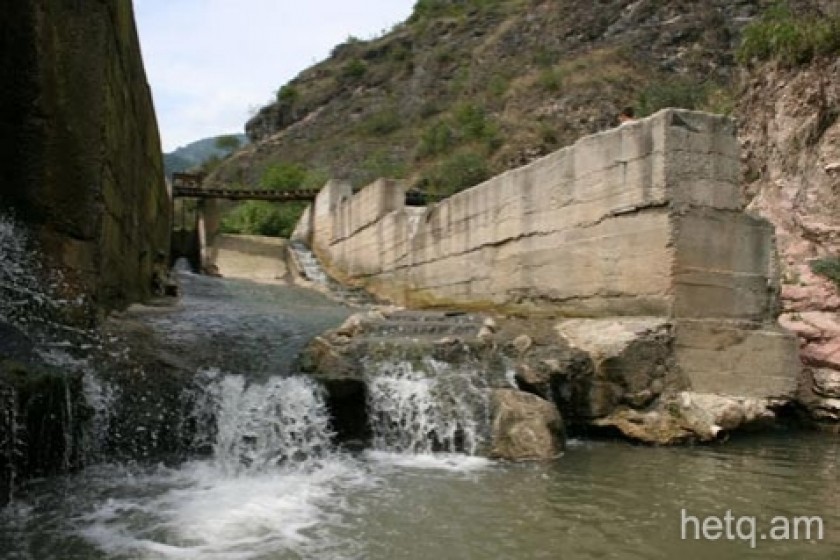
"No Fish, No Problem": Can the Damage Done By SHPs in Armenia Be Remedied?
Armenia’s rivers and streams are drying up. The culprit is greed in the form of small hydro-electric plants. They’re popping up all over the place.
Not only are they sprouting like mushrooms, but the owners seem bent on using every last drop of water available, leaving a mere trickle to flow downstream. It’s an environmental nightmare.
That was the picture painted by Inessa Gabayan today in her report “The Prospects of Low Carbon in Armenia” delivered at today’s session of the 5th Renewable and Clean Energy International Conference and Exhibition in Yerevan.
Gabayan is the director of HydroEnergetica, a Yerevan-based firm offering environmental and engineering evaluation and expertise, among other services.
During her talk, Gabayan presented her firm’s program for the sustained development of SHPs (small hydro plants), that is being implemented with financing from the Ministry of Foreign Affairs.
The program, launched in 2011 seeks to identify the various social and environmental issues associated with SHPs and proposes a number of remedies.
Gabayan drew parallels with Norway, which has developed the SHP sector for the past thirty years.
There, as opposed to Armenia, local communities are brought into the decision-making equation. Gabayan says the same can be done here, although she confesses that it won’t be easy to adopt the Norwegian model given conditions in Armenia.
Nevertheless, she said that certain steps can be taken so that community residents actually derive a benefit from the construction of SHPs. For example, projects that assist the development of local infrastructure, like the construction of waterways, should be promoted. Later on, a SHP can be built.
Projects that will have a minimal impact on the local environment should be given priority, Gabayan noted. She proposed that residents of a community where a SHP is built should receive cheaper electricity rates. In Armenia, residents of many communities aren’t even informed that a SHP is to be built in their backyard.
Focusing on the environmental impact of SHPs, Gabayan noted that the biggest problem is to ensure that adequate ecological outflows are maintained so that the river ecosystem is maintained. She said that one solution is to install equipment now being used in Norway.
Addressing the problem of diminishing native fish populations in Armenia, Gabayan argued that the first step should be to compose a national atlas of the country’s waterways that would specify SHP free zones. In Norway, the government has banned SHPs on salmon spawning rivers.
She also presented the results of a study conducted by her husband, Grigor Gabayan (now travelling abroad) which states that there isn’t one fish ladder/fishway in Armenia today that ensures normal migration upriver. Mrs. Gabayan said her husband inspected a total of 200 such facilities.
At this point, someone in the audience exclaimed, “No fish, no problem. That’s the operating principle.”
Mrs. Gabayan said it is also necessary to publicize how Environmental Impact Assessments (EIPs) are drafted, as there are no real guidelines or manuals on the subject.
She said that while there has been an increase in the construction of SHPs in Armenia over the past ten years, their socio-economic and environmental impact remains unclear.
Mrs. Gabayan noted that it was time to review the legal aspects and regulations regarding EIPs, pointing out that the process for SHPs is basically the same as for atomic power plants.
 Videos
Videos Photos
Photos
Write a comment